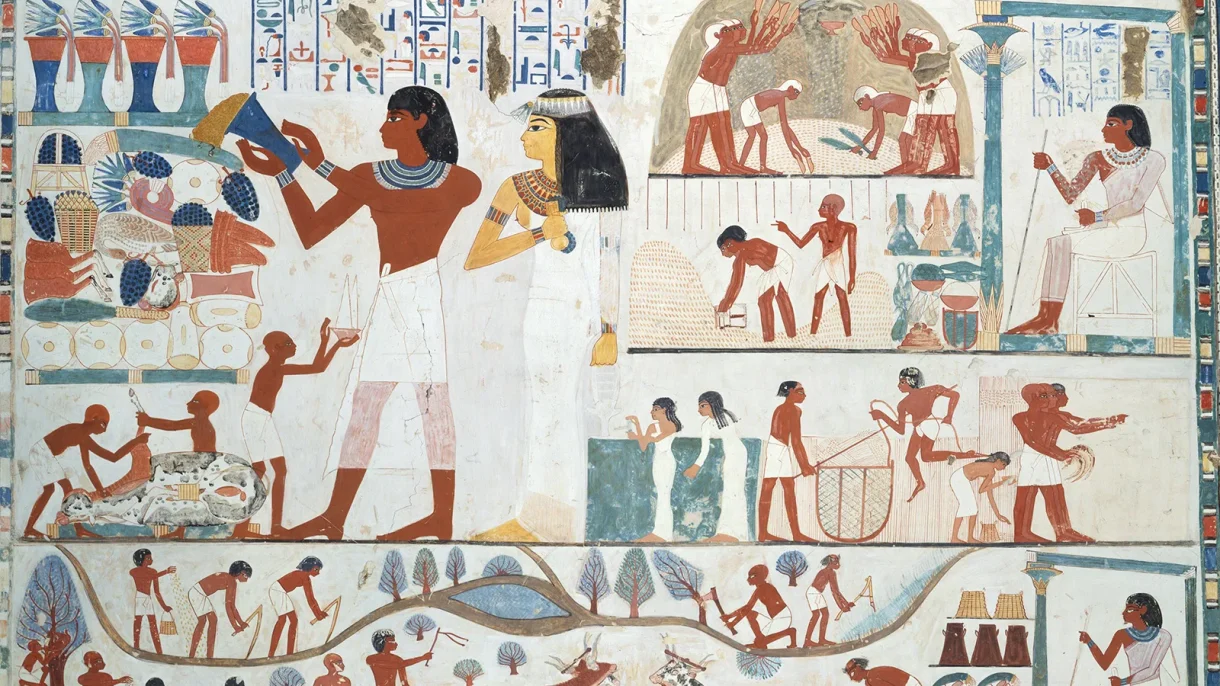Egyptian art and architecture, the ancient architectural monuments, sculptures, paintings, and applied crafts produced mainly during the dynastic periods of the first three millennia BCE in the Nile valley regions of Egypt and Nubia. The course of art in Egypt par
alleled to a large extent the country’s political history, but it depended as well on the entrenched belief in the permanence of the natural, divinely ordained order. Artistic achievement in both architecture and representational art aimed at the preservation of forms and conventions that were held to reflect the perfection of the world at the primordial moment of creation and to embody the correct relationship between humankind, the king, and the pantheon of the gods. For this reason, Egyptian art appears outwardly resistant to development and the exercise of individual artistic judgment, but Egyptian artisans of every historical period found different solutions for the conceptual challenges posed to them.
For the purposes of definition, “ancient Egyptian” is essentially coterminous with pharaonic Egypt, the dynastic structure of Egyptian history, artificial though it may partly be, providing a convenient chronological framework. The distinctive periods are: Predynastic (c. 6th millennium BCE–c. 2925 BCE); Early Dynastic (1st–3rd dynasties, c. 2925–c. 2575 BCE); Old Kingdom (4th–8th dynasties, c. 2575–c. 2130 BCE); First Intermediate (9th–11th dynasties, c. 2130–1939 BCE); Middle Kingdom (12th–14th dynasties, 1938–c. 1630 BCE); Second Intermediate (15th–17th dynasties, c. 1630–1540 BCE); New Kingdom (18th–20th dynasties, 1539–1075 BCE); Third Intermediate (21st–25th dynasties, c. 1075–656 BCE); and Late (26th–31st dynasties, 664–332 B

CE).
Geographical factors were predominant in forming the particular character of Egyptian art. By providing Egypt with the most predictable agricultural system in the ancient world, the Nile afforded a stability of life in which arts and crafts readily flourished. Equally, the deserts and the sea, which protected Egypt on all sides, contributed to this stability by discouraging serious invasion for almost 2,000 years. The desert hills were rich in minerals and fine stones, ready to be exploited by artists and craftspeople. Only good wood was lacking, and the need for it led the Egyptians to undertake foreign expeditions to Lebanon, to Somalia, and, through intermediaries, to tropical Africa. In general, the search for useful and precious materials determined the direction of foreign policy and the establishment of trade routes and led ultimately to the enrichment of Egyptian material culture. For further treatment, see Egypt; Middle Eastern religions, ancient.



